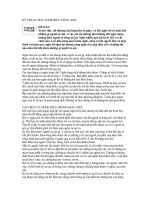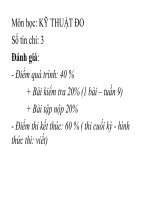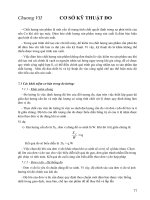- Trang chủ >>
- THPT Quốc Gia >>
- Hóa
Kỹ thuật dỗ trẻ nín khóc_Tiếng Anh
Bạn đang xem bản rút gọn của tài liệu. Xem và tải ngay bản đầy đủ của tài liệu tại đây (1.55 MB, 15 trang )
<span class='text_page_counter'>(1)</span><div class='page_container' data-page=1>
<b>Elina Botha </b>
MHSc,
Senior lecturer in
Midwifery, RN, PHN
Doctoral researcher
(University of
Tampere)
</div>
<span class='text_page_counter'>(2)</span><div class='page_container' data-page=2>
Dr. Harvey Karp, M.D, F.A.A.P
<sub>Assistant Professor of Pediatrics </sub>
<b><sub>in </sub></b>
<b>Santa Monica, Ca</b>
Author Happiest Toddler on the Block
<sub>Helped thousands of parents </sub>
</div>
<span class='text_page_counter'>(3)</span><div class='page_container' data-page=3>
A New Mother
To
<b>calm a crying baby</b>
is
</div>
<span class='text_page_counter'>(4)</span><div class='page_container' data-page=4>
What is colic?
<sub>The rule of three’s </sub>
<sub>Myth about blowing off steam? </sub>
<sub>Strengthening lungs? </sub>
</div>
<span class='text_page_counter'>(5)</span><div class='page_container' data-page=5>
Facts about colic
<sub>Crying starts at two weeks, </sub>
peaks at six weeks, and ends by
three to four months of age
<sub>Looks like pain </sub>
</div>
<span class='text_page_counter'>(6)</span><div class='page_container' data-page=6>
•
<sub>Crying often improves with </sub>
rocking, holding, shhing and gentle
abdominal pressure
•
<sub>Babies are healthy and happy </sub>
between crying
•
<sub>In many cultures, babies never get </sub>
colic
</div>
<span class='text_page_counter'>(7)</span><div class='page_container' data-page=7>
Harmful consequences of prolonged crying
•
<b><sub>Exhaustion </sub></b>
•
<b><sub>Breastfeeding Failure </sub></b>
•
<b><sub>Marital Stress </sub></b>
•
<b><sub>Postpartum Depression </sub></b>
•
<b><sub>Child Abuse-Shaken </sub></b>
<b>Baby Syndrome </b>
</div>
<span class='text_page_counter'>(8)</span><div class='page_container' data-page=8>
Things that are not usually
causes of colic
•
<sub>GI disorders </sub>
•
<sub>Maternal anxiety </sub>
</div>
<span class='text_page_counter'>(9)</span><div class='page_container' data-page=9>
The true basis of colic
The
<b>true basis of colic </b>
is
that
<i>fussy babies need </i>
<i>the sensations of the </i>
</div>
<span class='text_page_counter'>(10)</span><div class='page_container' data-page=10>
The
calming
reflex
</div>
<span class='text_page_counter'>(11)</span><div class='page_container' data-page=11>
Top ten ways to imitate the uterus
•
<sub>Holding/Sling </sub>
•
<sub>Dancing </sub>
•
<sub>Rocking </sub>
•
Swaddling
•
White noise or singing
•
Car rides
</div>
<span class='text_page_counter'>(12)</span><div class='page_container' data-page=12>
The 5 S’s
•
<b><sub>Swaddling </sub></b>
•
<b><sub>Side/Stomach </sub></b>
<b>position </b>
•
<b><sub>Shhing </sub></b>
</div>
<span class='text_page_counter'>(13)</span><div class='page_container' data-page=13>
All the 5 S’s together!
•
<sub>Baby’s basic needs first </sub>
•
<sub>Only for a healthy baby </sub>
•
<sub>Do it right! It’s a skill! </sub>
•
<sub>These will all be </sub>
</div>
<span class='text_page_counter'>(14)</span><div class='page_container' data-page=14></div>
<span class='text_page_counter'>(15)</span><div class='page_container' data-page=15></div>
<!--links-->









